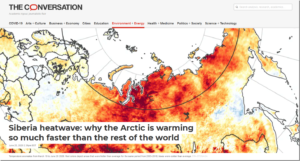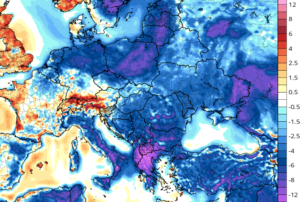by A. Watts, Dec1, 2025 in WUWT
The Intergovernmental Panel on Climate Change (IPCC) Sixth Assessment Report (AR6) states that the global surface temperature has risen markedly since the pre-industrial era. This warming has led to more frequent and intense extreme heat events over most continents. In summer 2010, western Russia was hit by a record-breaking heatwave, with the region experiencing the warmest summer since at least 1880 and numerous cities recording all-time high temperatures. Furthermore, in the context of global warming, future midlatitude heatwaves analogous to the 2010 event will become even more extreme, with the heatwave intensity increasing by about 8.4°C in western Russia. Thus, unraveling the physical processes involved in the 2010 western Russian heatwave is a matter of considerable concern within the scientific community.
Previous studies have elucidated that this extraordinary event in 2010 mainly resulted from internal natural variability, which includes but is not limited to the processes associated with El Niño to La Niña transition, the intensified Arctic dipole mode, the enhanced moisture–temperature coupling strength, high-latitude land warming, and increased aerosol concentrations. However, there is still some debate regarding the respective roles of dynamical and radiative processes in driving the 2010 western Russian heatwave.
A new study published in Atmospheric and Oceanic Science Letters by a research team led by Professor Song Yang at Sun Yat-sen University, China, reveals that surface dynamics and aerosol processes were the key drivers behind the extraordinary 2010 heatwave. This study provides a new quantitative perspective on the record-breaking western Russian heatwave.
…









